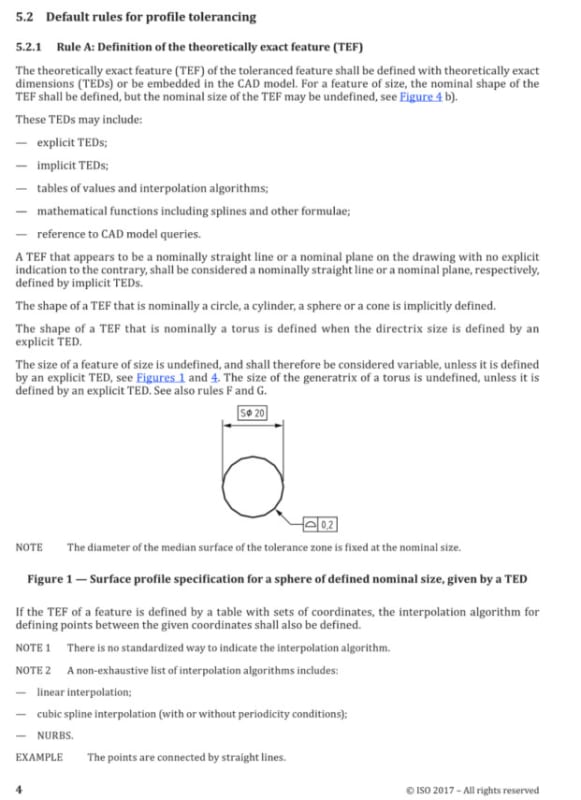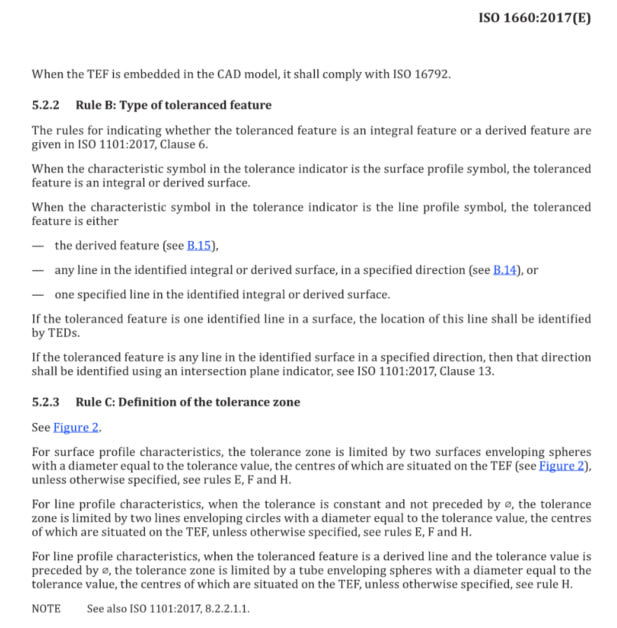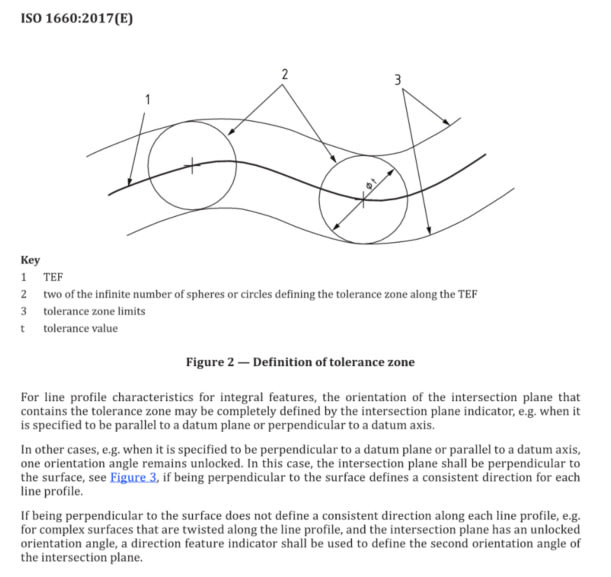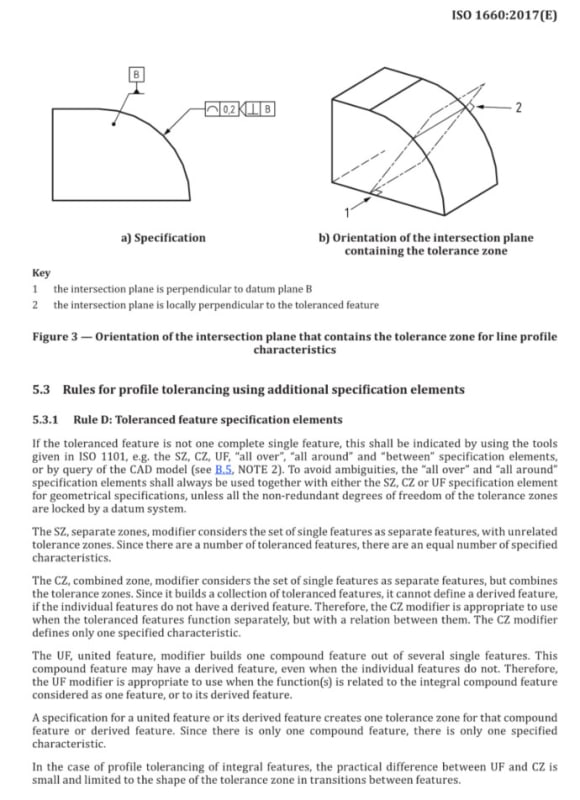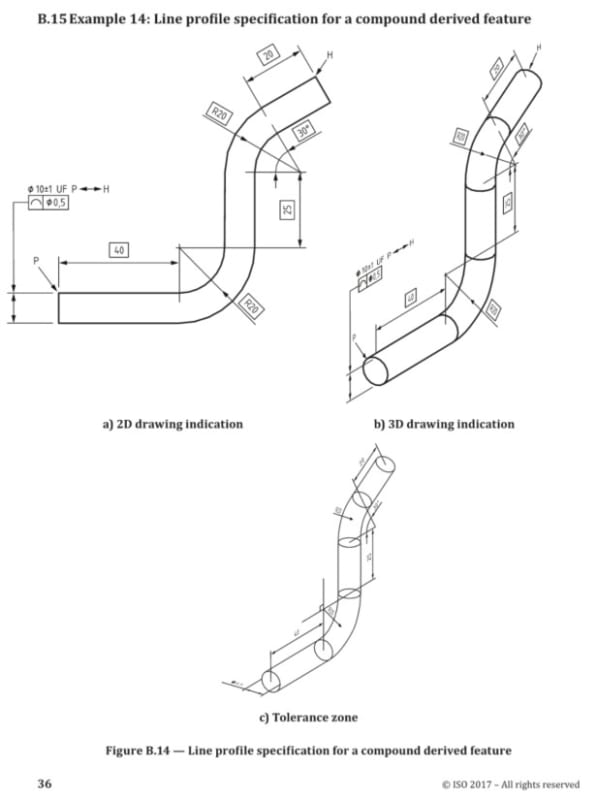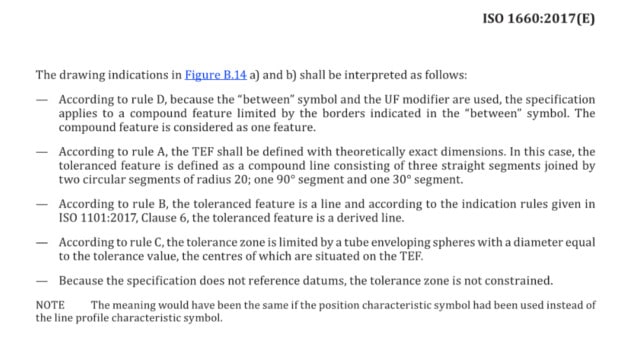Burunduk
Mechanical
- May 2, 2019
- 2,582
In thread1103-514448, at the last post of the thread, I saw this figure posted by Ryan and taken from ISO 1660. It surprised me a lot because I have never seen a diametric tolerance zone for profile of a line applied to a resolved geometry (spine?) of a feature of size (associated with the diameter dimension). I do not have a copy of ISO 1660, but I haven't found anything similar in ISO 1101-2017.
Is anyone here familiar with it and could maybe elaborate a bit about where exactly and how such a control is defined in the ISO GPS standards?
Is anyone here familiar with it and could maybe elaborate a bit about where exactly and how such a control is defined in the ISO GPS standards?

